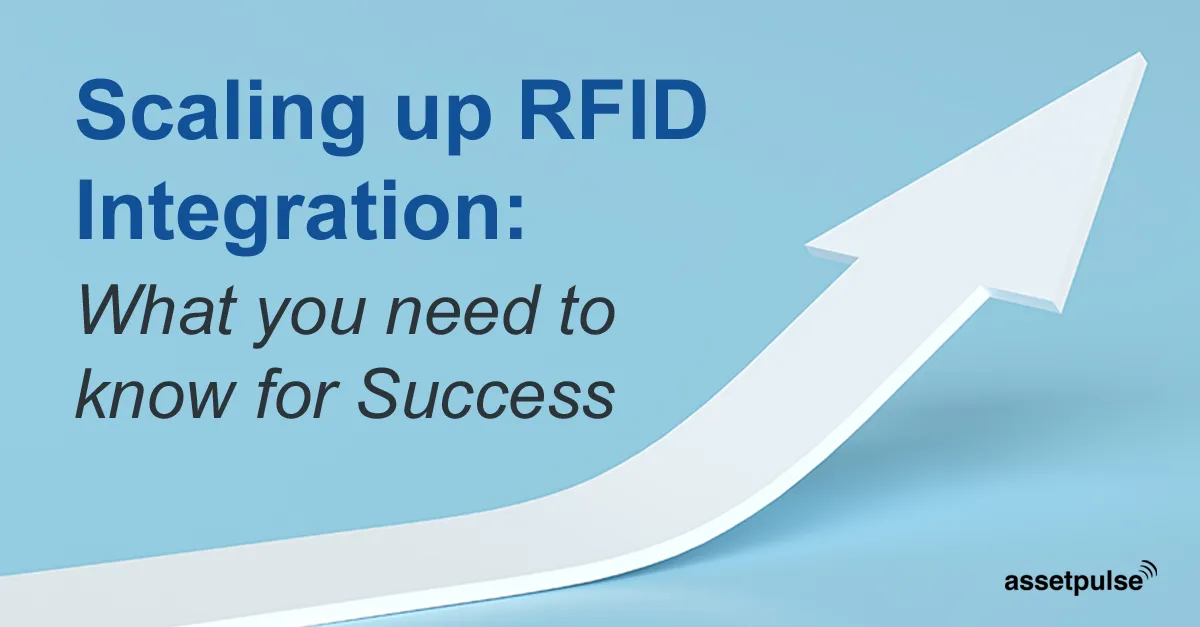Table of Contents
Integrating RFID asset tracking with other systems isn’t a simple process. It involves addressing the demands of scalability requirements, compatibility assessments, and even the challenges of legacy systems. As the complexities grow, every decision you make is crucial to the success of RFID integration.
In this blog post, we will look into the challenges of integrating RFID asset tracking with other systems. We’ll explore scalability, which is an essential factor to be considered in any Enterprise. We’ll also talk about compatibility between hardware, software, and data formats, ensuring smooth communication. And if you’re dealing with legacy systems, we’ll see how we can address the challenges and provide solutions for a seamless integration.
Scalability Requirements for RFID Integration
When integrating RFID asset tracking with other systems, it is important to consider scalability. This is because Enterprises are constantly adding (and deleting) assets, regardless of whether they are in a growth cycle or not. This makes the need to track assets even more critical.
Factors that Affect Scalability
There are a number of factors that can affect the scalability of an RFID asset tracking system. These include:
- The number of assets that need to be tracked: The more assets that need to be tracked, the more capacity the system will need.
- Processing Real-time data from RFID readers: RFID readers generate a lot of tag read data. E.g. RFID readers issue dozens of reads per second. In a tag-rich environment, this could result in tens of thousands of tag reads in an hour. The RFID system’s middleware component should be scalable enough to not only process the volume, but also to be able to process the data in real-time, such that there aren’t unnecessary delays.
- The type of data that needs to be tracked: Some types of data, such as images or videos, can require more bandwidth than other types of data.
When considering scalability, it is important to choose an RFID asset tracking system that can handle the needs of the business. This means choosing a system that has the capacity to grow as the business grows.
Ways to Improve Scalability of RFID Asset Tracking System
There are a number of ways to improve the scalability of an RFID asset tracking system. These include:
- Using Cloud-Based Systems: Cloud-based systems are scalable because they can be easily scaled up or down as needed.
- Using Distributed Systems: Distributed systems are scalable because they can spread the load across multiple servers.
- Using Caching: Caching can help to improve performance by storing frequently accessed data in memory.
- Optimized Adapter: The Adapter software of an RFID system manages the huge volume of tag read data from the fixed readers. It’s very important that the Adapter (or middleware) layer of the RFID system be very efficient, so it can process the thousands of reads coming from the various RFID readers and perform real-time analysis of the data.
When integrating RFID asset tracking with other systems, it is essential to consider scalability requirements. It enables companies to ensure that the system can handle the needs of the business as it grows.
Evaluating System Compatibility
In addition to scalability, it is also important to evaluate system compatibility for RFID integration with other systems. This includes evaluating the hardware, software, and data formats of the systems involved.
Hardware compatibility is important to ensure that the systems can communicate with each other. Software compatibility is important to ensure that the systems can exchange data in a consistent way. Data format compatibility is important to ensure that the data can be interpreted correctly by the systems.
If the systems are not compatible, it can lead to problems such as data corruption, errors, and system crashes. Therefore, it is important to carefully evaluate system compatibility before integrating RFID asset tracking with other systems.
Challenges and Solutions for Integrating Legacy Systems
In some cases, businesses may need to integrate RFID asset tracking with legacy systems. Legacy systems are older systems that may not be compatible with newer systems. This can pose challenges when integrating RFID asset tracking.
One challenge is that legacy systems may not use standardized data formats. This can make it difficult to exchange data between the systems. Another challenge is that legacy systems may not be able to handle the increased load that RFID asset tracking can generate.
Solutions to Integrate Legacy Systems
There are a number of solutions that can be used to address these challenges. One solution is to use Enterprise Middleware. Middleware is software that acts as a translator between different systems. This can help to ensure that systems can communicate and exchange data even if they use different data formats.
Another solution is to upgrade the legacy systems. This can be a costly option, but it can be necessary to ensure that the systems are compatible with RFID asset tracking.
By carefully evaluating the challenges and solutions, businesses can successfully integrate RFID asset tracking with legacy systems.
AssetPulse is an experienced RFID solutions provider that offers best-in-class, customizable RFID and IoT asset tracking solutions to customers from different industries across the globe.



